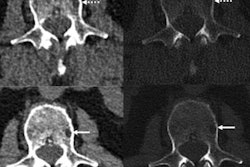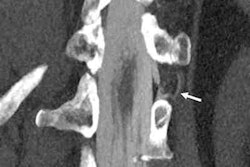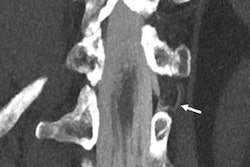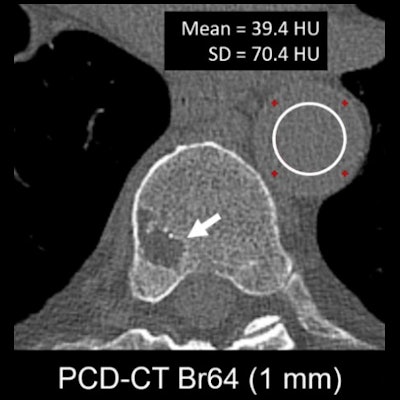
Mayo Clinic researchers have found that the first clinically available photon-counting CT scanner performed better than conventional CT in a study published December 14 in Radiology.
The technology could dramatically improve patient care, according to study co-author Cynthia McCollough, PhD, director of the CT Clinical Innovation Center at the Mayo Clinic in Rochester, MN.
"With photon-counting-detector CT, we are seeing anatomy and disease at a resolution that has never before been achieved in patients, and that is providing physicians new information and insights -- insights that can change patient management," McCollough said in a statement released by the RSNA. "In patients with coronary artery disease, for example, photon-counting-detector CT can provide diagnostic quality images in patients who previously were not good candidates for CT imaging of their coronary arteries. This will spare many patients from having to have more invasive types of testing."
Photon-counting-detector CT systems measure individual x-ray photons as they pass through a patient's body, rather than the conventional CT approach, which measures the total energy of many x-rays at one time. The technology offers benefits compared with standard CT such as less noise during the exam, better spatial resolution, and reduced radiation dose, noted a group led by Kishore Rajendran, PhD, also of the Mayo Clinic.
In September, the U.S. Food and Drug Administration (FDA) cleared Siemens Healthineers' Naeotom Alpha photon-counting CT system. McCollough and colleagues conducted a study that included four patients who were imaged with both photon-counting CT and conventional CT between May and August of this year; the exams included CT angiography of the coronary arteries and abdomen/pelvis, whole-body low-dose CT for skeletal surveillance, and temporal bone imaging.
The team compared the technical performance of the photon-counting CT scanner with a conventional system, evaluating metrics such as the following:
- Noise power spectrum
- Modulation transfer function
- Section sensitivity profile
- Iodine CT number accuracy in virtual monoenergetic images
- Iodine concentration accuracy
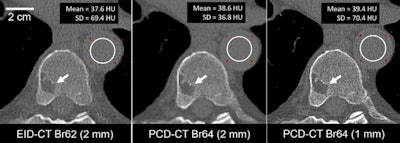 A 74-year-old male clinically indicated for a whole-body low-dose CT skeletal survey for multiple myeloma. Energy-integrating-detector CT (EID-CT) scan (axial image, left) and high-resolution photon-counting-detector CT (PCD-CT) scan (axial image, center and right) were acquired using the same radiation dose (4.2 mGy). PCD-CT images (center) using the same section thickness (2 mm) as EID-CT images (left) showed 47% lower noise (69.4 HU vs. 36.8 HU). Use of thinner (1 mm) section thickness (right) and 1024 x 1024 matrix resulted in image noise comparable to EID-CT and improved the delineation of a vertebral lesion (arrow). Display window/level = 1500/150 HU. Images and caption courtesy of the RSNA.
A 74-year-old male clinically indicated for a whole-body low-dose CT skeletal survey for multiple myeloma. Energy-integrating-detector CT (EID-CT) scan (axial image, left) and high-resolution photon-counting-detector CT (PCD-CT) scan (axial image, center and right) were acquired using the same radiation dose (4.2 mGy). PCD-CT images (center) using the same section thickness (2 mm) as EID-CT images (left) showed 47% lower noise (69.4 HU vs. 36.8 HU). Use of thinner (1 mm) section thickness (right) and 1024 x 1024 matrix resulted in image noise comparable to EID-CT and improved the delineation of a vertebral lesion (arrow). Display window/level = 1500/150 HU. Images and caption courtesy of the RSNA.McCollough's group found that the high-resolution mode of the photon-counting CT scanner showed 125-micron in-plane spatial resolution and 0.3-mm longitudinal resolution, "the smallest reported to date for a clinical CT system," the investigators wrote. It also produced a 66-ms temporal resolution multienergy imaging in dual-source mode, noise reduction of up to 47%, and dose reduction of up to 30% compared with conventional CT.
"Photon-counting-detector CT is so exciting because it provides information that existing CT detectors -- the types that we've used for over 50 years -- previously just couldn't capture," McCollough said. "It allows us to scan faster, with lower radiation and contrast media doses, while obtaining higher quality images with greater spatial detail and lower noise levels. For many clinical applications, the improvements in image quality are really striking."






